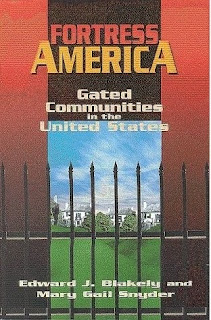 |
| Screenshot from news coverage of police investigating serial murders in Long Island beach communities in 2010 |
Sometime during the evening of May 1, 2010, a young woman named Shannon Gilbert, ran away from a house party in a neighborhood of Oak Beach, NY. Later that night, she was stalked by someone in an SUV and ran to another home in that same neighborhood screaming "They're after me".
Since then police looking for Shannon have found the bodies of eight young women nearby, apparent victims of the so-called Craig's List serial killer. Shannon has not been found.
Some reports say Shannon was a prostitute hired to work that night. Others say she was bi-polar and a drug addict. Criminologists tell us high-risk lifestyles are a factor in murder. All those things might be true. Of all the things that matter most, those things don't.
What matters most is Shannon deserved protection from violence and harm. How do we get that protection?
Shannon may have been "on the job", but she wasn't on the street. The Oak Park house Shannon fled was in a gated community.
Since then police looking for Shannon have found the bodies of eight young women nearby, apparent victims of the so-called Craig's List serial killer. Shannon has not been found.
Some reports say Shannon was a prostitute hired to work that night. Others say she was bi-polar and a drug addict. Criminologists tell us high-risk lifestyles are a factor in murder. All those things might be true. Of all the things that matter most, those things don't.
What matters most is Shannon deserved protection from violence and harm. How do we get that protection?
Shannon may have been "on the job", but she wasn't on the street. The Oak Park house Shannon fled was in a gated community.
Gated communities, or master-planned communities, have a notorious history. A decade ago planners Blakely and Snyder claimed 8 million Americans lived in gated communities (GCs).
In Fortress America, they wrote gated residents are "retreating from their neighbors by locking themselves behind security controlled walls, gates and barriers."
Some GCs sell exclusive enclaves of leisure and prestige. Most sell the promise of neighborhood defense and suburban security.
Research suggests GCs offer no more security, possibly less than well-run, crime prevention programs.
Shannon's story suggests this is true.
A millennia ago Feudal Europe forted up in hundreds of walled, medieval castles. Robin Hood (at least in my childhood imagination) saw forts as protection for those with power and oppression for those without.
Some GCs sell exclusive enclaves of leisure and prestige. Most sell the promise of neighborhood defense and suburban security.
Research suggests GCs offer no more security, possibly less than well-run, crime prevention programs.
Shannon's story suggests this is true.
A millennia ago Feudal Europe forted up in hundreds of walled, medieval castles. Robin Hood (at least in my childhood imagination) saw forts as protection for those with power and oppression for those without.
Back then democracy did not exist. It was also an age that offered up the Black Plague. One hopes we have progressed since then. One wonders.
May Shannon be found safe.


These types of gated communities are alive and well north of the 49th parallel as well......some Canadians, too, are enamoured of the 'us v. them' psychology these 'communities' feed.
ReplyDeleteYou are absolutely right.
ReplyDeleteThe only Canadian research I've ever found is work by Jill Grant at Dalhousie. In her 2004 paper "Why planners are ambivalent about gated communities" she found 300 in Canada, (70% in BC) and the actual number was 3 times more.
That was 7 years ago!
Gill says: "If fears about public security escalate (as is possible in the contemporary era of global terrorism), then more Canadians may hope to escape behind the gates. As planners, how should we respond?"
How indeed!
Thanks for your interest Norm.